
Great Spotted Woodpecker
Great Spotted Woodpecker
Great Spotted Woodpecker
Are you familiar with a bird called 'Akagera'? Maybe you find it easier to picture when you hear 'woodpecker'. Yes, the Great Spotted Woodpecker represents that group. Typically, the names of woodpeckers include the terms 'gera' or 'kera', and there are no birds actually named just 'woodpecker'. The origin of the name is intriguing, but let's also explore its ecology.
Great Spotted Woodpecker Basic Infomation
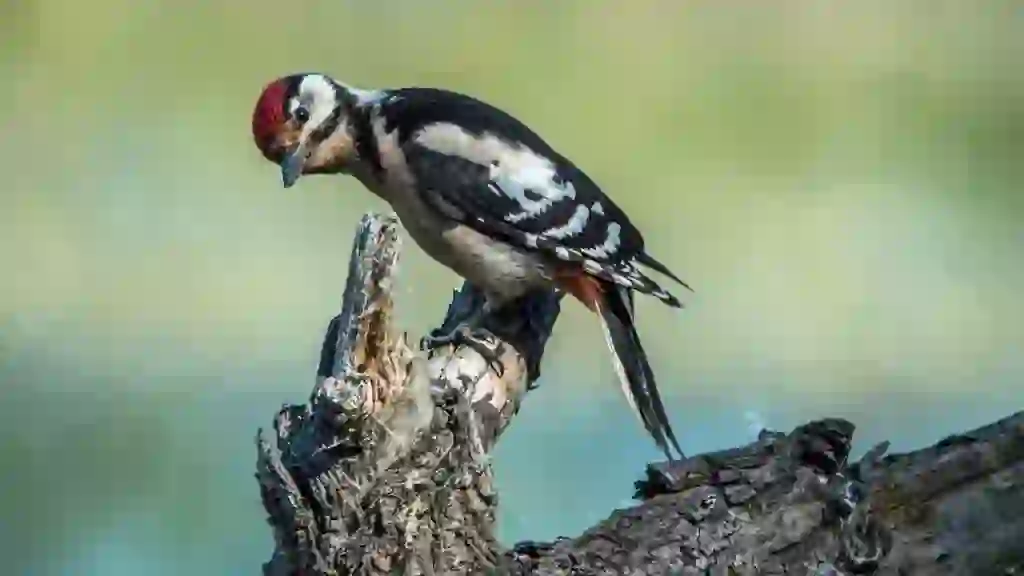
Order: Piciformes, Family: Picidae, Genus: Dendrocopos
Total length: 20-24 cm (wingspan 38-44 cm)
Weight: 66-98 kg
The Great Spotted Woodpecker is found worldwide, including in Europe, North Africa, Russia, Mongolia, and China. It is commonly seen in Japan, particularly in Hokkaido. It can also be found in Honshu, but not in Kyushu or Okinawa.
The bird's body features a beautiful tri-color pattern of red, white, and black, resembling a painting. It is characterized by white spots on its back and an inverted white 'Y' pattern on its shoulders.
The color pattern varies slightly between males and females. Males have a red head while females have a black head, which makes it easy to distinguish between the sexes.
Interestingly, both sexes have red heads when they are born, and as they grow, only the females' heads turn black.
The woodpecker's claws are long and very sturdy.
Although its tail appears soft like other feathers, it is actually quite firm and thick, which helps the bird grip trees and support its body vertically, allowing it to peck at the wood.
Many might recognize this behavior from illustrations or animations of woodpeckers, famously seen pecking vertically at trees.
It is thanks to these claws and its tail that it can perform such actions.
Great Spotted Woodpecker Q&A

What is the origin of the name 'Great Spotted Woodpecker'?
As mentioned at the beginning, all members of the woodpecker family include 'gera' or 'kera' in their names.
Woodpeckers, known for pecking at old trees and creating holes, also used to peck at old wooden temples, which led them to be called 'Teratsutsuki'. This name evolved into 'Keratsutsuki', and eventually, all woodpeckers came to be referred to with names containing 'kera' or 'gera'.
In the case of the Great Spotted Woodpecker, the 'Akagera' part of its name comes from the red color of the male's head, which is quite striking and fitting.

Why does the Great Spotted Woodpecker live there?
Great Spotted Woodpeckers generally live in forests rich in trees but in Hokkaido, they are so common that they can be seen in parks.
They peck at old or dying trees to create holes for their nests. The holes can be 4 cm in diameter and 30-45 cm deep, but they don't stay in one nest for long.
Interestingly, they build a new nest each year. It might seem like a tough job for such a small body to create such large holes, but it's necessary to protect themselves from predators.
If they are lucky not to be discovered by predators, they can replace their nests annually, but if they sense danger, they immediately build a new one.
This behavior also benefits other forest creatures; birds like tits, squirrels, dormice, and bats use the abandoned holes as their nests. Despite moving frequently, the Great Spotted Woodpecker provides high-quality homes for many, making it an essential carpenter of the forest.
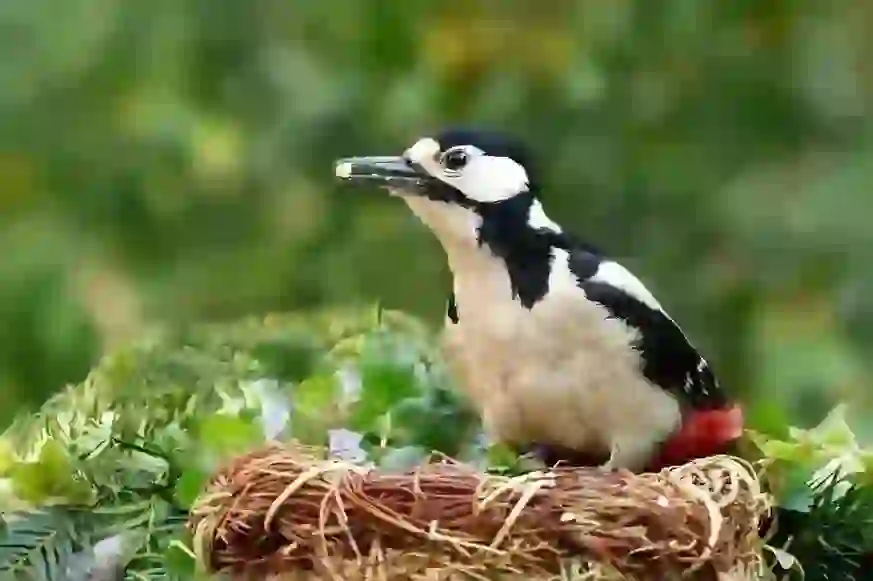
What does the Great Spotted Woodpecker eat?
Not only during nesting but also when feeding, the Great Spotted Woodpecker's beak is quite useful.
It strips bark with its beak to feed on insects living underneath or digs into wood to extract insects using its tongue skillfully.
It mainly eats wood-boring beetles, spiders, and their larvae, but it also feeds on ground-dwelling ants.
Apart from insects, it loves tree fruits, using its beak to peel them and selectively eating the seeds inside. It's quite skillful.
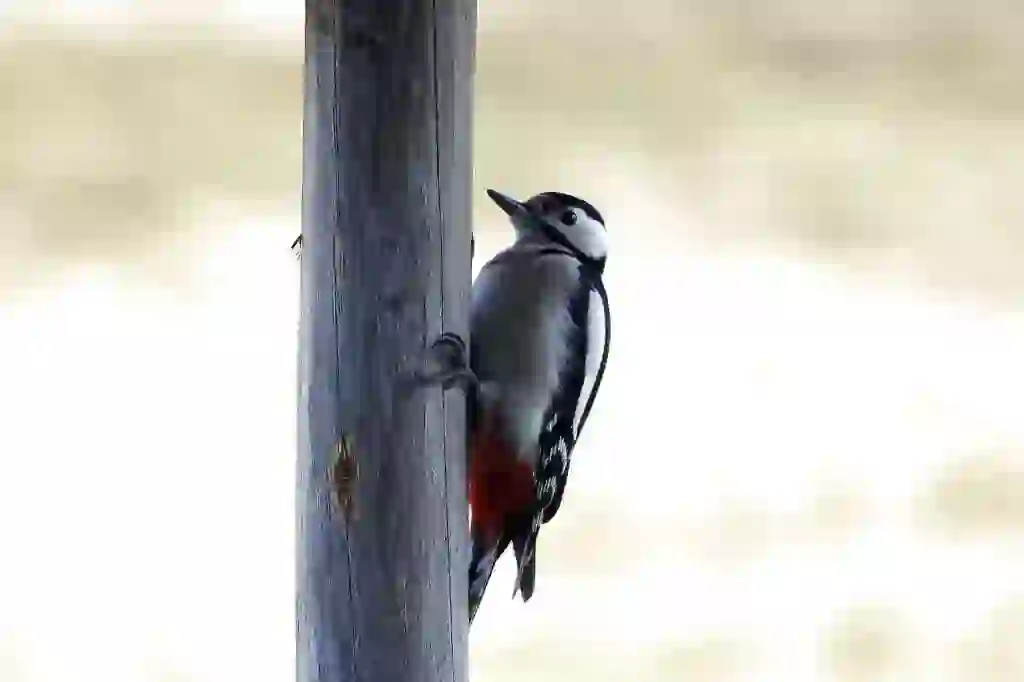
Is it true that the Great Spotted Woodpecker is called 'the guardian of the forest'?
Not just the Great Spotted Woodpecker, but many woodpecker species are referred to as 'guardians of the forest'. Let's explore why.
The reason is that these birds help control pests that can be harmful to the forest.
The Great Spotted Woodpecker is particularly good at controlling the larvae of a beetle known as 'Matsunomadarakamikiri', which can be damaging. This beetle carries a nematode that kills pine trees, called 'Matsunozaisenchu'.
By eliminating the larvae, adult beetles that carry the nematode are also reduced, thus protecting the forest.
There have been cases where over 90% of pests were eliminated in pine forests where nest boxes for woodpeckers were installed. The Great Spotted Woodpecker is truly indispensable for both the forest's residents and its trees.

Do Great Spotted Woodpeckers really perform 'drumming'?
Great Spotted Woodpeckers and other woodpecker species perform a behavior known as 'drumming', which we will discuss first.
Drumming is an act of producing sound without using vocal calls, similar to how gorillas beat their chests to intimidate.
When Great Spotted Woodpeckers drum, it is used to attract mates, intimidate rivals during territorial disputes, or signal a shift change while parenting.
During nesting and drumming, they can peck at wood up to 20 times per second.
You might worry about the impact on their brains or necks from such frequent pecking, but there's no need to worry.
The woodpecker's skull is connected to its beak, allowing vibrations to disperse effectively, and the base of the beak is thick, which helps reduce internal impact.
Furthermore, the muscles of the tongue wrap around from the nose to the base of the skull, helping protect the head.
Thanks to these anatomical features, the Great Spotted Woodpecker can peck without harming itself.
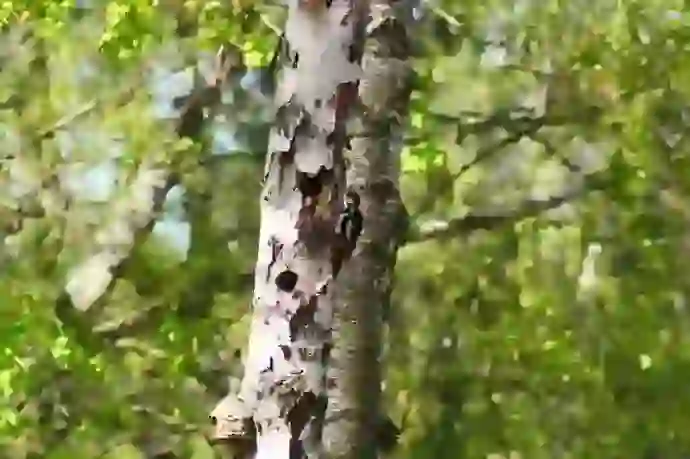
How does the Great Spotted Woodpecker raise its young?
Great Spotted Woodpeckers, which usually act alone or in pairs, lay 4-6 eggs in a nest cavity during the breeding season.
Both parents take turns incubating the eggs, waiting for them to hatch.
It takes about two weeks for the eggs to hatch, and the chicks are ready to fly about 20 days after hatching, spending all this time inside the nest.
The parents provide food, so the chicks grow rapidly without needing to practice flying—they simply take off when they're ready, which seems mysterious but may be instinctual.
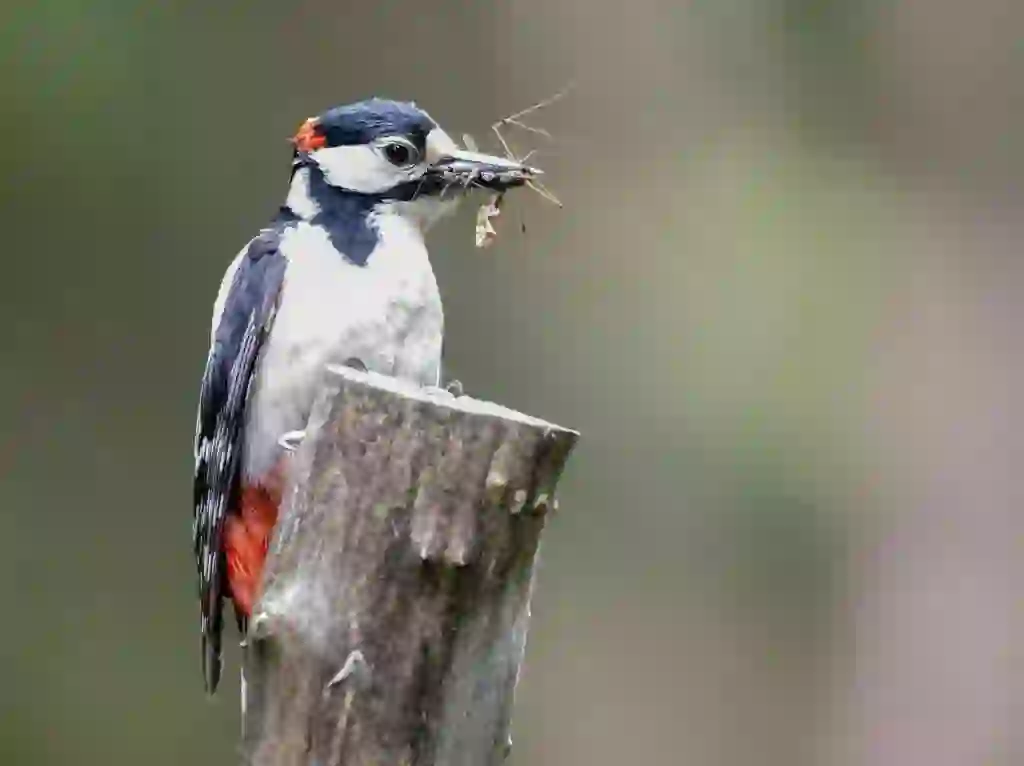
Does the Great Spotted Woodpecker have any natural predators?
Despite being called 'the guardian of the forest', even the Great Spotted Woodpecker has natural predators.
Predators include larger and stronger birds like Goshawks and Sparrowhawks, which can be distressing as they sometimes prey on other birds.
However, the most vulnerable are the chicks, which are targeted by Goshawks, Sparrowhawks, crows, and even snakes that dig into their nests.
Since the chicks cannot defend themselves, they are frequently preyed upon.

Is it true that Great Spotted Woodpeckers make holes in human homes?
While Great Spotted Woodpeckers are beneficial for forests and trees, they can cause problems for humans.
They make holes in old trees but also in wooden buildings, including homes. As mentioned in their name origin, they have caused significant damage to temples and even historically important buildings.
Although hunting them is prohibited, the current solution is to cover walls with nets, which changes the appearance of homes. It's unfortunate, but we might have to tolerate it considering we are intruding into their natural habitat.
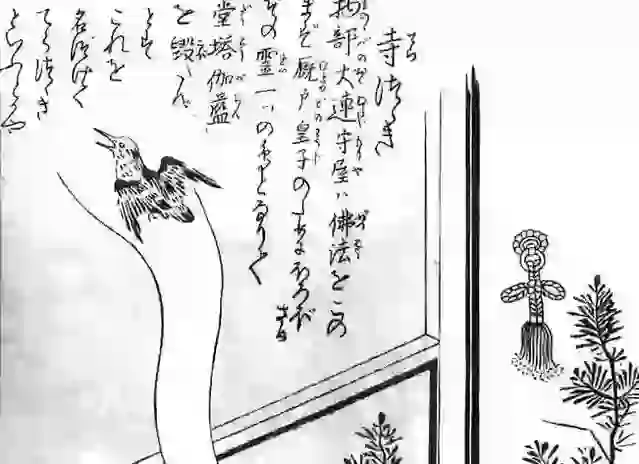
Is the Great Spotted Woodpecker a yokai (supernatural creature)?
In the illustrated collection 'Konjaku Gazu Zoku Hyakki', a yokai called 'Teratsutsuki' appears.
It is said that Teratsutsuki, which was Mononobe no Moriya transforming into this yokai, made holes in the Four Heavenly Kings Temple built by Prince Shotoku.
This Teratsutsuki is believed to have been a Great Spotted Woodpecker.
It seems that damage from Great Spotted Woodpeckers has been a concern since ancient times.

Would you like to become a part of the 'Animalbook.jp'?
Turn your knowledge into Q&A and share it with the world. ※Publication will be activated after purchase. Let's share information together!
Great Spotted Woodpecker Type of List
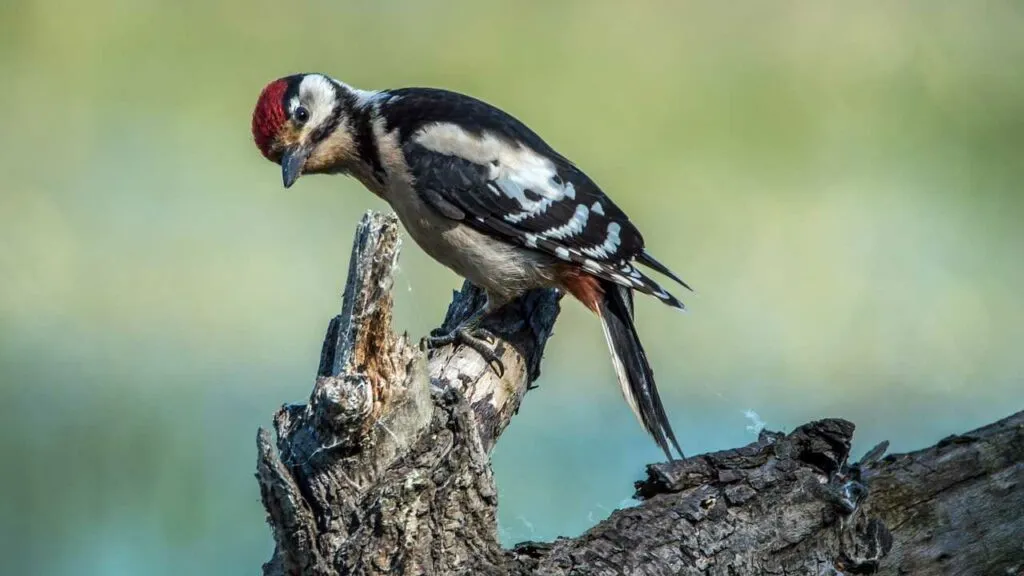
Introducing members of the woodpecker family similar to the Great Spotted Woodpecker:
- Lesser Spotted Woodpecker
- Greater Spotted Woodpecker
- Japanese Spotted Woodpecker
- Northern Spotted Woodpecker
- Auston's Spotted Woodpecker
- Namiye's Spotted Woodpecker
- White-backed Woodpecker
- Black-rumped Woodpecker
- Varied Woodpecker
- Common Woodpecker
- Grey-faced Woodpecker
- Streaked Woodpecker
- Himalayan Woodpecker
- Striped Woodpecker
- Yellow-rumped Woodpecker
- Black-headed Woodpecker
- Japanese Pygmy Woodpecker
- High-collared Woodpecker
- Malay Woodpecker
- Philippine Woodpecker
- Brown-cheeked Woodpecker
- Celebes Woodpecker
- Hokkaido Pygmy Woodpecker
- Miyake Woodpecker
- Shikoku Pygmy Woodpecker
- Tsushima Pygmy Woodpecker
- Amami Woodpecker
- Kyushu Pygmy Woodpecker
- Ryukyu Woodpecker
- Orii's Woodpecker
- Noguchi's Woodpecker
- High-backed Woodpecker
Information
Congratulations! You are the first commenter!

Create Your Favorite List!
Great Spotted Woodpecker
Save the animals you love! Build your own list to quickly revisit your favorites later.

Would you like to leave a comment?
※Please note: This is for the purchase of rights to post comments within the article.
Find Your Favorites!
Our shop offers a unique and attractive selection of goods themed around various animals.
Great Spotted Woodpecker References

- Wikipedia https://ja.wikipedia.org/wiki/アカゲラ
- サントリーの愛鳥活動 https://www.suntory.co.jp/eco/birds/encyclopedia/detail/4521.html
- 森と水の郷あきた http://www.forest-akita.jp/data/bird/35-akagera/aka.html
- CANON BIRD BRANCH PROJECT https://global.canon/ja/environment/bird-branch/photo-gallery/akagera/index.html
- 北海道札幌の自然 http://miyanooka1.sakura.ne.jp/akagera.html
- コトバンク https://kotobank.jp/word/アカゲラ-24282
- 目に見えるいきもの図鑑 https://orbis-pictus.jp/article/akagera.php#:~:text=アカゲラの生態,つついて餌を探す。
- 日本の野鳥識別図鑑 https://zukan.com/jbirds/internal15311
- キツツキ対策・キツツキ除け https://bouffier.biz/kitutuki/
- 丹波新聞 https://tanba.jp/2019/05/神社の壁に無数の穴 忍び寄るキツツキ被害/
- 上州自然散策3 https://itohnori3.exblog.jp/29554045/
- 動物JP http://xn--hhru84e.jp/akagera/
Great Spotted Woodpecker Introduction of media used
出典:https://pixabay.com/videos/id-3285/

出典:https://pixabay.com/images/id-1472139/

出典:https://pixabay.com/images/id-5311893/

出典:https://pixabay.com/images/id-4638595/

出典:https://pixabay.com/images/id-4766100/

出典:https://unsplash.com/photos/OJq8_EQn0eM

出典:https://pixabay.com/images/id-5094658/

出典:https://unsplash.com/photos/r4lpIzqJuFs
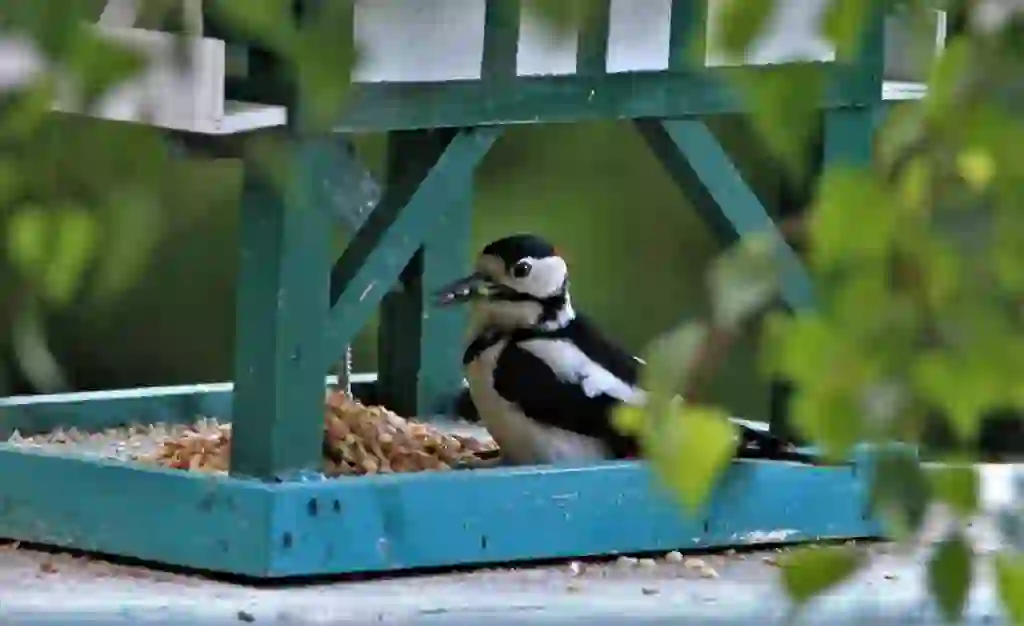
出典:https://pixabay.com/images/id-5224674/
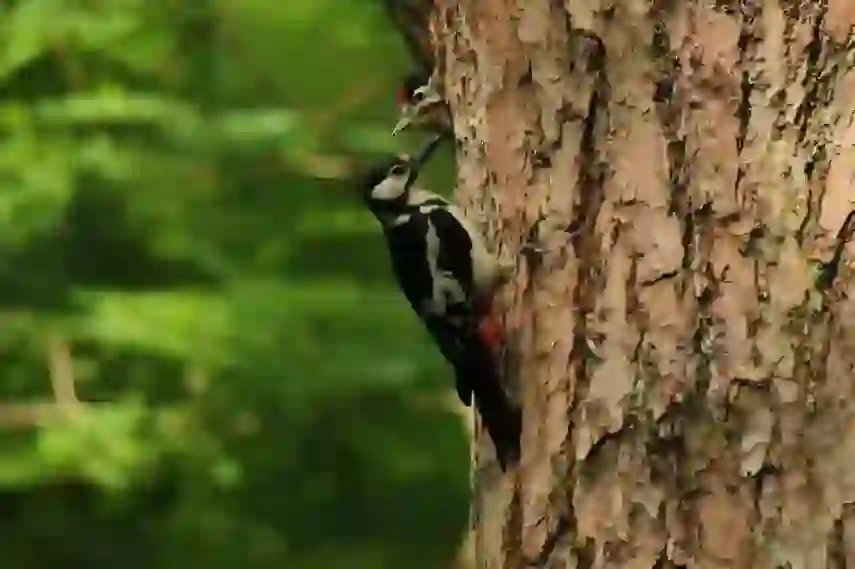
出典:https://pixabay.com/images/id-3439160/
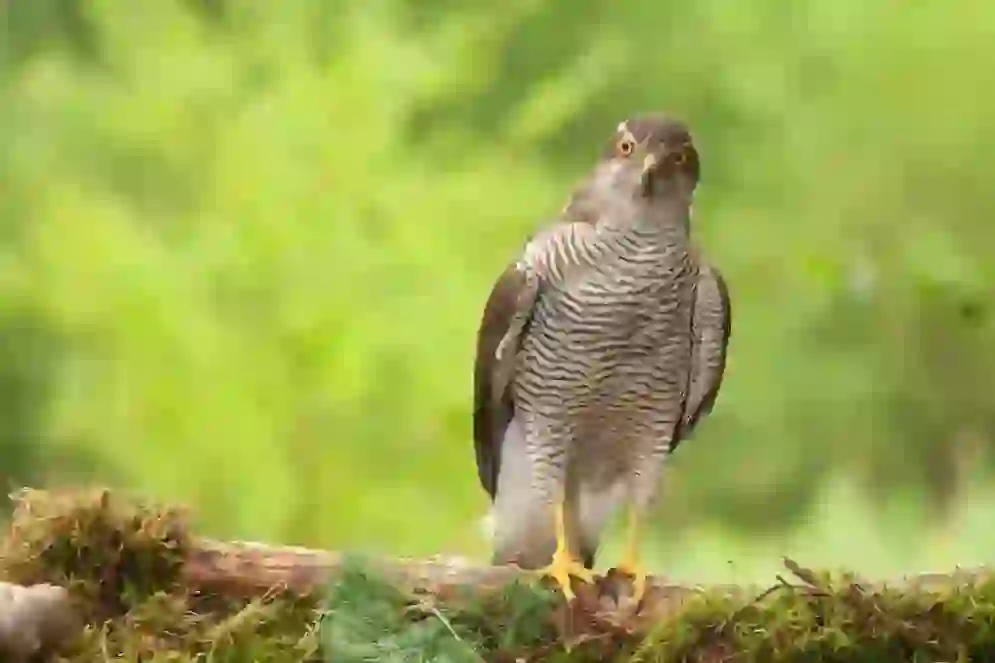
enemy
出典:https://pixabay.com/images/id-6696074/
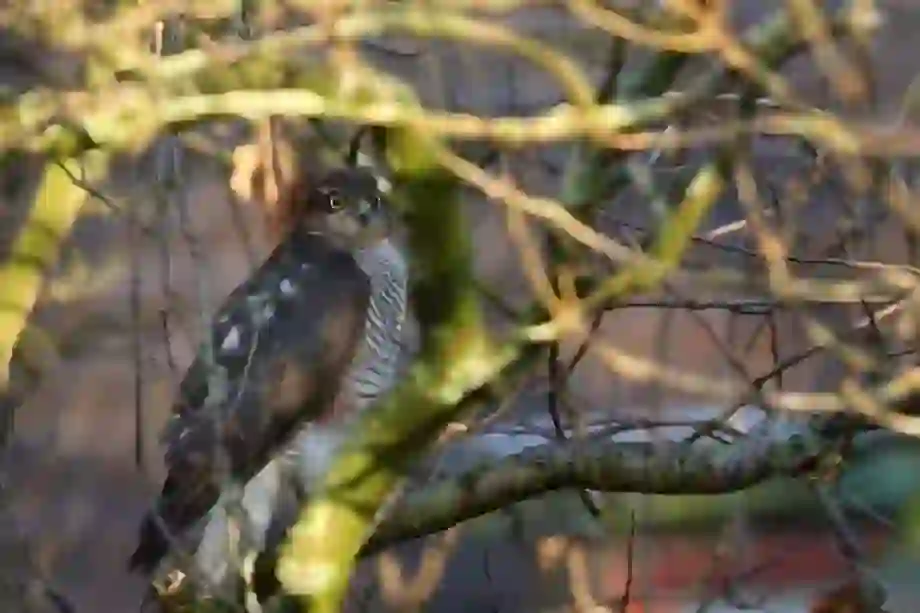
enemy
出典:https://pixabay.com/images/id-6315938/

other
出典:https://pixabay.com/images/id-2288207/

other
出典:https://commons.wikimedia.org/wiki/File:SekienTeratsutsuki.jpg

Help Enrich Our Animalbook.jp with Your Media!
We are constantly looking to expand and enrich our Animalbook.jp with amazing photos and videos of animals. If you have any media that you'd like to share, please contribute and help us showcase the beauty and diversity of the animal kingdom. Your submissions will be credited and featured in our encyclopedia, reaching a wide audience of animal lovers.


















